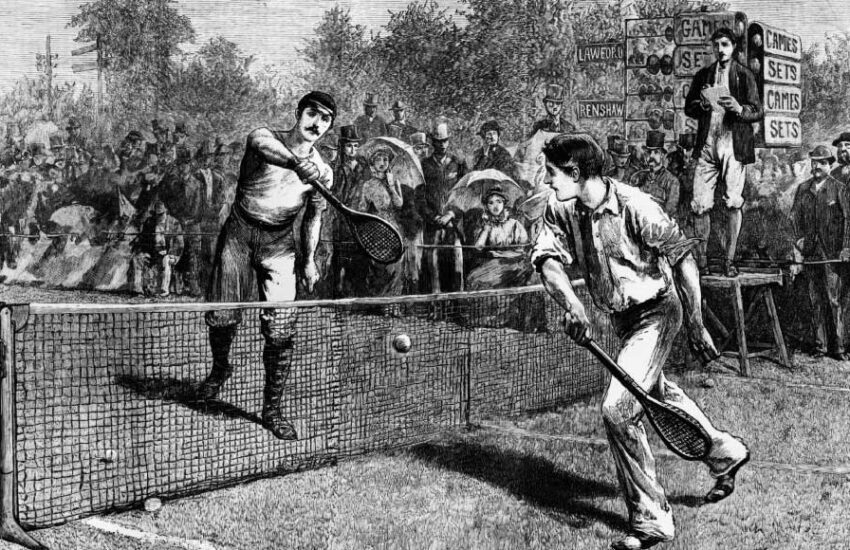Tennis Spin: Explore the Techniques and Tactical Advantages
In the realm of tennis, spin is an art form, a strategic maneuver that can significantly impact gameplay dynamics. Understanding and applying spin techniques can confer a significant advantage, altering the ball’s trajectory, speed, and behavior. Mastery of spin offers a realm of possibilities for players seeking to elevate their game to new heights.
Topspin: The Dominant Spin Technique
Topsin is the bedrock of spin in tennis, a technique widely used due to its unique ability to drive the ball down and forward upon contact. This forward slice, introduced in the early 20th century, has become a staple in the repertoire of players across all levels.
The execution of topspin demands a precise forward motion, generating a clockwise rotation when the racket strikes the ball. This spin not only enhances the ball’s speed and power but also renders it challenging for opponents to return, given its quick descent and higher bounce.
Beyond its speed, topspin offers unparalleled control, enabling players to execute precise shots while increasing the likelihood of mistakes from opponents.
Backspin: Precision and Control in Ball Trajectory
Backspin, the counter to topspin, involves striking the ball in a backward manner, resulting in a clockwise and upward spin. The deliberate backward slice, executed by opening the racket face, creates a slower-paced shot that travels with a lower trajectory.
The characteristics of a backspin shot, including its slower pace and reduced bounce, make it a formidable defensive tactic. It confounds opponents by altering the tempo of the game and inducing errors due to its controlled, low-flight trajectory.
Sidespin: The Art of Variation and Unpredictability
Sidespin introduces horizontal spin to the ball, accomplished by brushing it from side to side. This unique spin alters the ball’s flight path, confounding opponents by deviating from the expected trajectory.
The utilization of sidespin offers players the advantage of unpredictability, enabling them to manipulate the ball’s path to strategically deceive opponents. This variability not only increases tactical options but also makes it challenging for adversaries to anticipate shots.
Discover the secret behind tennis ball fuzz.
Slice: Creating Tactical Advantage with Reverse Spin
Slice, akin to a backspin variant, involves striking the ball in a slicing motion, causing it to spin counterclockwise and veer away from the opponent. This classic stroke, executed with a flat or slightly open racket face, produces a slower, lower-bouncing ball that poses unique challenges to opponents.
The reverse spin of a slice shot, coupled with its lower trajectory, makes it a potent defensive tactic. It disrupts opponents’ rhythm, forcing errors and limiting their ability to execute winning shots.
Underpinning Spin Variations: Kick Serve
The kick serve, an advanced topspin technique, creates a high-bouncing, sharply curving trajectory upon landing. This serve, characterized by its pronounced topspin, poses challenges for opponents due to its sudden bounce and unpredictable flight path, often disrupting their return strategies.
Drop Shot: Subtleties in Backspin
Mastering the drop shot involves employing a disguised backspin stroke, delicately executed to produce a gentle, low-velocity shot. This tactic, often used as a surprise element during rallies, employs backspin to reduce the ball’s speed and bounce, catching opponents off guard and forcing them to cover more ground swiftly.
Tactical Significance and Strategic Implementation
- Spin Combinations: Professional players often deploy spin combinations to enhance their tactical repertoire. The artful integration of topspin with slices or side spin variations enables players to craft shots with multifaceted spin attributes, creating confusion and complexity in the opponent’s anticipation;
- Spin Adaptation: The choice and manipulation of spin techniques in tennis are heavily influenced by the court surface. For instance, clay courts favor high topspin shots that dig into the surface, enhancing control. In contrast, grass courts require lower bouncing shots with slices to maintain ball control on faster surfaces.
Intriguing Facts About Tennis Spin
- The spin rate, measured in revolutions per minute (RPM), quantifies the degree of spin imparted on a tennis ball. Professional players can achieve staggering spin rates, with top players often exceeding 2,000 RPM on their shots, showcasing their mastery in controlling the ball’s trajectory and behavior;
- The evolution of tennis string technology has significantly impacted spin dynamics. Modern string compositions, featuring textured surfaces and advanced materials, allow players to grip the ball more effectively, enhancing their ability to generate and manipulate spin with precision and consistency;
- Over the years, the game of tennis has witnessed a shift towards spin dominance. The strategic use of various spins has revolutionized gameplay, empowering players to harness spin’s unpredictability and control to dictate rallies, creating thrilling and dynamic exchanges on the court.
Conclusion
Beyond its fundamental applications, tennis spin embodies an intricate realm of techniques and tactical nuances. Advanced spins like the kick serve and drop shot, strategic spin combinations, and the impact of spin on different court surfaces showcase the depth and versatility spin adds to the game.
Moreover, intriguing facets such as spin rate measurement and the technological advancements in strings underscore the continual evolution and significance of spin in modern tennis. Mastering spin techniques not only enhances a player’s skill but also amplifies their strategic prowess, setting the stage for captivating and dynamic matches.



